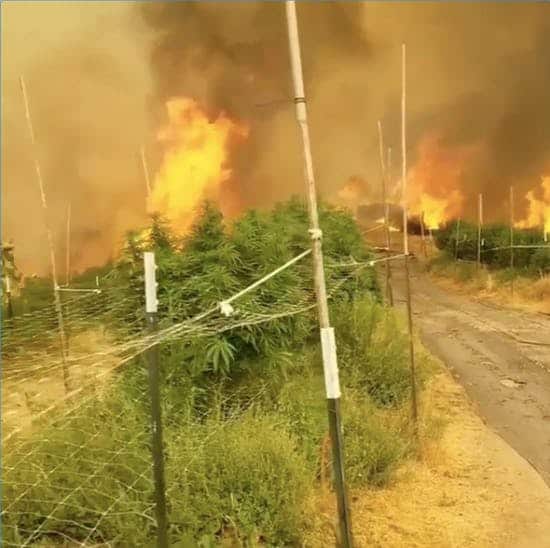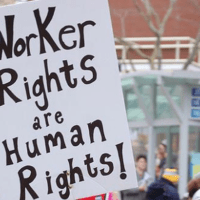By Lauren Mendelsohn, Esq.
[email protected]
 If 2020 has taught Californians anything, it’s the importance of being prepared for and knowing how to respond to disasters and unexpected events. How can cannabis companies prepare for and respond to emergencies like wildfires, power outages, earthquakes, and infectious disease outbreaks? This blog post aims to provide some guidance in this area.
If 2020 has taught Californians anything, it’s the importance of being prepared for and knowing how to respond to disasters and unexpected events. How can cannabis companies prepare for and respond to emergencies like wildfires, power outages, earthquakes, and infectious disease outbreaks? This blog post aims to provide some guidance in this area.
Have Written Emergency Plans Ready
All employers in California, including cannabis businesses, must prepare, maintain and implement a number of written plans that lay out the company’s protocols for responding to emergencies. These include:
- Emergency Action Plan
- Fire Prevention Plan
- Injury and Illness Response Plan
- Hazard Communication Plan
Additional plans may be required depending on the type of workplace or industry. For example, industries where workers are frequently exposed to dust or other particulates in the air (such as construction) must have a Respiratory Protection Plan in place. All outdoor places of employment as well as industries involving “transportation or delivery of agricultural products,” both of which could include cannabis facilities, must have a Heat Illness Prevention Plan.
While there are some exceptions to having these plans in writing for small employers, a company of any size would be wise to put this information on paper both for the purposes of helping to properly train employees on these plans and procedures (which is also a legal requirement) and to be able to refer to in the event of an emergency, while avoiding confusion about what needs to be done and who is responsible for doing what.
Furthermore, simply having the required plans is not enough; employees must be properly trained on the plans, and the plans need to be evaluated on a regular basis so that updates can be made as necessary. Employers should designate one supervisor or employee from each facility to be the emergency coordinator, who will be in charge of ensuring the company’s emergency plans are followed. The plans must also be ready to be implemented. For example, if an emergency plan calls for use of a certain type of personal protective equipment (PPE) such as N95 masks or gloves, or for certain cleaning products to disinfect employee workspaces, or for a generator to keep the facility running in the event of a power outage, companies should make sure they have these materials ahead of time as it may be difficult or impossible to obtain these types of items once an emergency has occurred.
Know Where to Find Important Information and Resources
In the event of a disaster or emergency, cannabis companies should look to relevant local, state, and federal agencies as well as reputable non-governmental organizations working in that area to see if there is any specific response information or guidance to be followed. Contact information for local health, fire, and police departments and poison control centers should be readily available to all employees, and savvy companies can also utilize tools like social media to “follow” groups who provide emergency information. Twitter and Facebook are particularly useful platforms when it comes to sharing information about emergency situations, and first responders and local officials use these platforms frequently to communicate with the public. Utility companies like PG&E also typically post information about current and planned power outages on their website and social media pages, so keep an eye on that, especially during extreme weather events. In addition, some jurisdictions require people to sign up in order to receive emergency alerts, so make sure to opt in to that if that’s the case where your business is located.
During a health emergency like COVID-19, it is important that cannabis companies refer to their local health departments and governing bodies to determine what rules they need to be following. Businesses may need to shut down, modify their operations, or to implement certain social distancing and disinfection protocols pursuant to a local ordinance, which many jurisdictions across California have adopted in response to the coronavirus pandemic. In addition, there may be state-level guidance to follow, such as the COVID-19 industry-specific guidance published by the California Department of Public Health (CDPH), the COVID-19 information promulgated by Cal/OSHA, or employment-related laws enforced by the Labor Commissioner’s Office. At the federal level, the Centers for Disease Control and Prevention (CDC) is the primary agency that issues health-related guidance and resources for businesses, though other agencies such as the US Department of Labor are involved as well.
Familiarize Yourself With Cannabis-Specific Disaster Rules
The Bureau of Cannabis Control, the Department of Public Health’s Manufactured Cannabis Safety Branch, and the Department of Food & Agriculture’s CalCannabis Licensing Branch all have specific regulations pertaining to disaster relief as well as loss of connectivity to the track-and-trace system. The provisions from the three agencies are similar but not identical.
To summarize, a cannabis licensee who is unable to comply with a law, regulation, or other requirement they ordinarily must follow to maintain their license due to a disaster may request temporary relief from the appropriate agency, and the agency will then make a determination about whether to grant or deny this request and what conditions will apply if it is granted. The definition of “disaster” is limited to events posing “extreme peril to the safety of persons and property” for which the Governor or a local governing body has proclaimed a state of emergency, including fires, sudden and severe energy shortages, and disease outbreaks.
Below are examples of disaster-related requests that cannabis companies might make:
- Request to move cannabis stored at the licensed premises to another secure facility due to an evacuation order covering the licensed premises.
- Request to redesign the interior layout of a licensed facility to comply with COVID safety protocols such as spacing out worker stations and having doors for ingress and egress.
- Request to operate via curbside pick-up model to maximize social distancing.
The three sets of cannabis regulations all discuss how a licensee can move cannabis goods to an alternate secure location immediately during an emergency to prevent theft, degradation, or other loss of product, though they differ slightly in terms of the notification timelines and the method of making the request. The regulations also deal with reporting loss of access to the track-and-trace system, and how to keep records during a loss of connectivity. Given how evacuations and extended power shutoffs are becoming commonplace in certain regions of the state, cannabis licensees should think ahead about where they might move their cannabis goods to if a disaster impacts their ability to keep them safely at the licensed premises and how they might be able to continue operating at their premises if the power is cut.
While a more in-depth analysis of the cannabis disaster regulations is beyond the scope of this blog post, it is discussed in more detail in this presentation that our office gave earlier this year. Additionally, it is worth noting here that state regulations require cannabis licensees to have at least one supervisor and one employee complete the Cal/OSHA 30-Hour General Industry Training course with an authorized training provider.
Budget for Disasters
California is a wonderful place to live, but it is also no stranger to natural disasters. Cannabis business owners should anticipate that something bad could happen and be prepared not only in terms of proper planning and employee training, but also in terms of finances. This means adding a line item for emergencies into the budget and putting aside enough resources to deal with common disaster situations that might arise. This is particularly important for cannabis businesses who may be unable to access government-sponsored disaster relief funding as a result of cannabis’ illegal status under federal law.
Some disaster-related costs will be unavoidable. However, cannabis companies can minimize the financial risk associated with emergencies (as well as their liability overall) by complying with the appropriate rules and regulations, as monetary penalties from regulatory agencies can be steep. Whether it is a fine from the Bureau of Cannabis Control for failure to notify them of loss of access to the track-and-trace system within the designated time frame, or a citation from Cal/OSHA for failure to implement proper COVID protocols among facility workers, proper planning and compliance can help avoid this.
Additionally, insurance can help cover various types of disaster-related loss, from property damage to lost profits and more. While obtaining insurance may have been difficult for cannabis businesses in the past, it is becoming increasingly easier as more insurance providers cater to this growing industry. That said, it’s important to review insurance policies carefully to make sure they don’t contain exclusions for conduct that is federally unlawful (which commercial cannabis activity still is, despite being legal at the state level).
Conclusion
Although this blog post only scratches the surface of emergency preparedness and response, more information can be found on Cal/OSHA’s Cannabis Industry Health and Safety page, as well as various posts that we’ve written for our blog.
Lauren Mendelsohn is a Senior Associate Attorney at the Law Offices of Omar Figueroa, a boutique law firm serving California’s cannabis and hemp industries.
This information is provided as a public educational service and is not intended as legal advice. For specific questions regarding cannabis laws in California, including health and safety for cannabis businesses, contact the Law Offices of Omar Figueroa at 707-829-0215 or [email protected] to schedule a confidential legal consultation.



